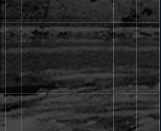|
At
stake, as Colombia unravels, is a political program far more revolutionary
and more radically opposed to Colombia's democratic constitution
than anything on offer in the rather muddled and old-fashioned Marxist
Leninist socialism espoused by the guerrillas. Propelled by the
military muscle of Castaño's AUC, Colombia risks finding
itself with the first democratically supported totalitarian government
in Latin America, with a mandate to launch an all-out war of extermination
against its internal, guerrilla enemy.
THE
PARAMILITARY BUILD-UP
Until recently, officials in Bogotá and Washington, obsessed
with the difficulties of the peace process, the explosion of drug
crops, and increased guerrilla terrorism, have ignored the paramilitary
threat. So it came as a shock when Ministry of Defense figures,
released in December 2000, revealed that in the last two years,
the membership of the AUC doubled, from 4,000 to over 8,000 troops.
Army analysts forecast that if the paramilitaries keep growing at
this rate, they will soon overtake the forces of the FARC's peasant
army, which currently stands at 17,000 fighters.
Yet these figures may already be out of date. Since last summer,
in all the areas where the AUC has recently expanded its operations,
AUC commanders have been conducting an aggressive, even forcible,
recruiting drive. In a recent letter to President Pastrana, Castaño
claimed to have 11,000 men under arms, and last May he told Madrid's
"El Mundo," the current figure was over 10,000.
While record levels of poverty and rural unemployment drive young
peasants into the ranks of both guerrillas and paramilitaries, the
paramilitaries pay better than the guerrillas: their troops live
better, eat better, travel in larger cars, and, in the villages
and cities where they have established permanent bases, it is reported
that they pick up more women.
Base pay for the troops runs between $200 and $400 a month. Through
a range of front companies, Castaño provides health insurance,
even social security for his troops who reportedly get 10 days R&R
every four weeks. The mafioso character of the AUC, however, emerges
most clearly in the recruitment of front commanders. Commanders
are selected according to an established profile. If possible, a
commander should have a background in intelligence. He will be offered
a complete change of identity, including plastic surgery to transform
his appearance, if he wishes. But he is prohibited from ever returning
to his previous life, and he must commit to the AUC for a minimum
of 10 years. A commander is responsible for forming a unit of 50
men, divided into three groups, each of which controls an area 250
hectares square. He must carry out the orders for atrocities and
train his troops to execute them. Commanders can make $4,000 a month.
|
|

